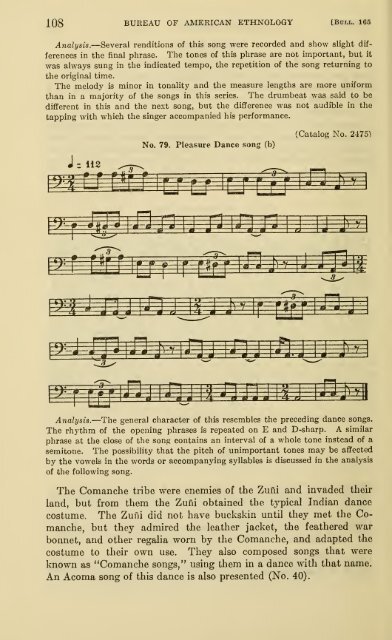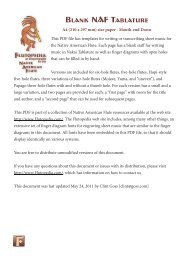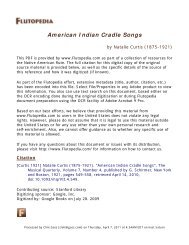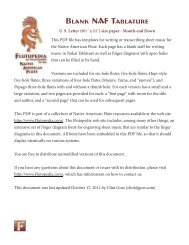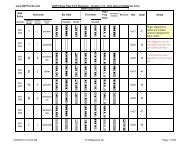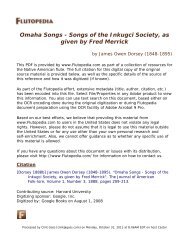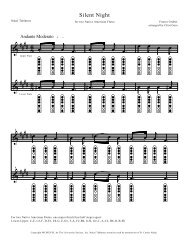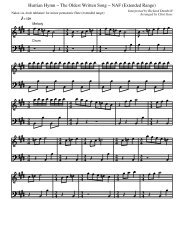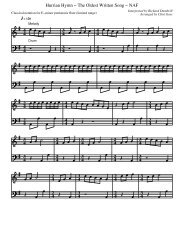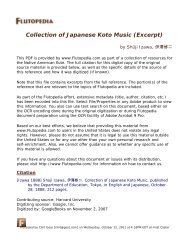Music of Acoma, Isleta, Cochiti, and Zuñi Pueblos - Flutopedia.com
Music of Acoma, Isleta, Cochiti, and Zuñi Pueblos - Flutopedia.com
Music of Acoma, Isleta, Cochiti, and Zuñi Pueblos - Flutopedia.com
Create successful ePaper yourself
Turn your PDF publications into a flip-book with our unique Google optimized e-Paper software.
g<br />
108 BUREAU OF AMERICAN ETHNOLOGY [Bull. 165<br />
Analysis.—Several renditions <strong>of</strong> this song were recorded <strong>and</strong> show slight differences<br />
in the final phrase. The tones <strong>of</strong> this phrase are not important, but it<br />
was always sung in the indicated tempo, the repetition <strong>of</strong> the song returning to<br />
the original time.<br />
The melody is minor in tonality <strong>and</strong> the measure lengths are more uniform<br />
than in a majority <strong>of</strong> the songs in this series. The drumbeat was said to be<br />
different in this <strong>and</strong> the next song, but the difference was not audible in the<br />
tapping with which the singer ac<strong>com</strong>panied his performance.<br />
No. 79.<br />
Pleasure Dance song (b)<br />
(Catalog No. 2475)<br />
M>^iM^f4^ »—<br />
^^<br />
pj:_i-j:p4n4^ XZK m<br />
W^<br />
i 9t<br />
m ^!.i i<br />
>nii7ii<br />
Analysis.—The general character <strong>of</strong> this resembles the preceding dance songs.<br />
The rhythm <strong>of</strong> the opening phrases is repeated on E <strong>and</strong> D-sharp. A similar<br />
phrase at the close <strong>of</strong> the song contains an interval <strong>of</strong> a whole tone instead <strong>of</strong> a<br />
semitone. The possibility that the pitch <strong>of</strong> unimportant tones may be affected<br />
by the vowels in the words or ac<strong>com</strong>panying syllables is discussed in the analysis<br />
<strong>of</strong> the following song.<br />
The Comanche tribe were enemies <strong>of</strong> the Zuni <strong>and</strong> invaded their<br />
l<strong>and</strong>, but from them the Zuiii obtained the typical Indian dance<br />
costume. The Zuni did not have buckskin until they met the Comanche,<br />
but they admired the leather jacket, the feathered war<br />
bonnet, <strong>and</strong> other regalia worn by the Comanche, <strong>and</strong> adapted the<br />
costume to their own use. They also <strong>com</strong>posed songs that were<br />
known as "Comanche songs," using them in a dance with that name.<br />
An <strong>A<strong>com</strong>a</strong> song <strong>of</strong> this dance is also presented (No, 40).


